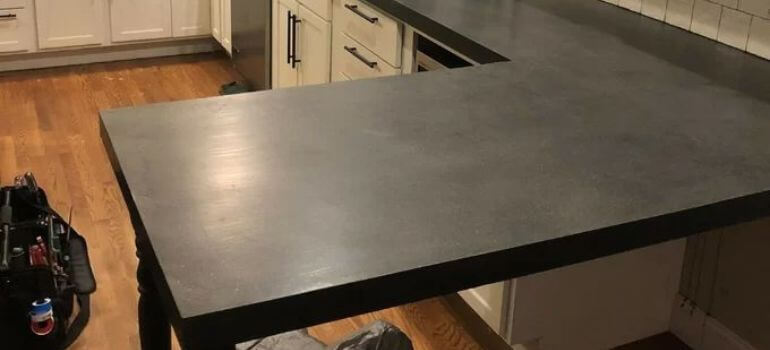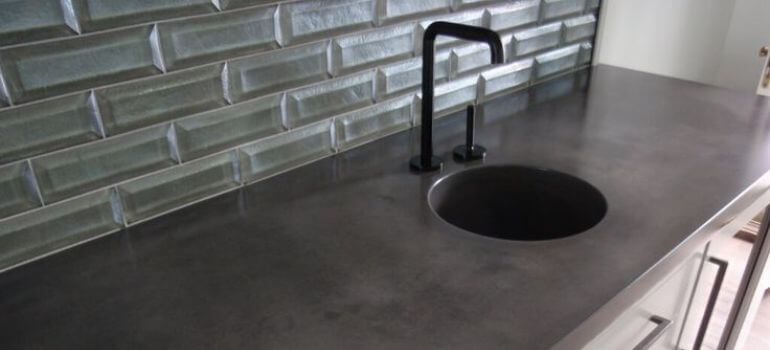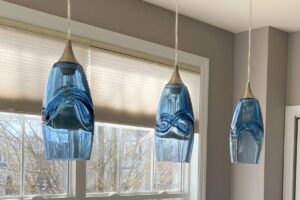In the dynamic realm of kitchen design, the choice of countertop material plays a pivotal role in both aesthetics and functionality. With a growing emphasis on sustainability, two notable contenders have risen to prominence: Richlite and Paperstone. In this comprehensive guide, we’ll explore the nuances of these eco-friendly materials, comparing their features, aesthetics, environmental impact, and practical considerations to help you make an informed decision for your kitchen.
Introduction
The surge in eco-conscious living has fueled a demand for sustainable choices in home design. Countertops, being a focal point in kitchens, are no exception. Homeowners now seek materials that not only enhance the visual appeal of their spaces but also align with eco-friendly principles.
Richlite – A Closer Look
Definition and Origin of Richlite
Richlite, a composite material, has gained recognition for its durability and versatility. Originating from paper pulp and resin, it undergoes a high-pressure process that transforms it into a robust surface suitable for various applications.
Characteristics and Properties of Richlite
Known for its strength and resistance to heat and moisture, Richlite offers a practical solution for kitchen countertops. Its density and composition make it a formidable choice for those who prioritize functionality.
Advantages of Choosing Richlite for Countertops
The advantages of Richlite extend beyond its durability. With an array of color options and a smooth, matte finish, it provides a sophisticated look while maintaining its eco-friendly credentials.
Paperstone – Unveiling the Green Alternative
Introduction to Paperstone
Paperstone, another eco-friendly contender, is composed of recycled paper and petroleum-free resin. Its manufacturing process involves minimal environmental impact, making it an appealing choice for those prioritizing green living.
Composition and Manufacturing Process
The combination of paper fibers and resin, compressed under high pressure, results in a dense and sturdy material. This process not only ensures durability but also contributes to the sustainable profile of Paperstone.
Key Features that Make Paperstone Unique
Paperstone stands out for its unique aesthetic appeal. With a rich, leather-like texture and a variety of color options, it provides a distinctive look that complements modern kitchen designs.
Comparing Aesthetics: Richlite vs. Paperstone

In the realm of kitchen design, aesthetics play a pivotal role, and choosing the right countertop material goes a long way in defining the overall look of the space. Richlite and Paperstone, both renowned for their eco-friendly characteristics, differ significantly when it comes to aesthetics. Let’s delve into the visual aspects of these two materials to help you make an informed decision for your kitchen.
Visual Appeal of Richlite
Richlite, derived from paper pulp and resin, offers a sleek and modern appearance. The manufacturing process allows for a smooth and matte finish, providing a polished and sophisticated look to countertops. The color options for Richlite are diverse, ranging from classic neutrals to bold and vibrant hues.
The material’s uniform surface creates a seamless and contemporary feel in kitchens. Whether you prefer a minimalist design or a statement piece, Richlite can be tailored to suit various aesthetic preferences.
Aesthetics and Color Variations in Paperstone
Paperstone, on the other hand, boasts a distinctive appearance that sets it apart. Composed of recycled paper and resin, Paperstone has a unique leather-like texture. This characteristic adds depth and a tactile quality to the countertops, making them stand out in a crowd.
In terms of color variations, Paperstone offers a rich palette, often inspired by natural elements. Earthy tones and subtle patterns contribute to a warm and inviting ambiance in the kitchen. The textured surface not only adds visual interest but also provides a tactile experience, making it a popular choice for those seeking a more tactile and sensory connection with their countertop.
Considering Personal Preferences
Choosing between Richlite and Paperstone ultimately boils down to personal preferences and the desired aesthetic for your kitchen. If you lean towards a contemporary and smooth finish with a wide range of color options, Richlite might be the ideal choice. On the other hand, if you appreciate a textured surface that adds character and depth, Paperstone could be the perfect fit.
It’s advisable to gather samples of both materials and visualize them in your kitchen space. Consider factors such as existing color schemes, lighting conditions, and overall design goals. Aesthetics go hand in hand with functionality, so strike a balance that aligns with your taste while meeting the practical needs of your daily kitchen activities.
In the end, the beauty of both Richlite and Paperstone lies not just in their visual appeal but also in their commitment to sustainability. Whichever material you choose, you can be confident that you’re making a green choice for your home.
Conclusion
In the rich tapestry of sustainable countertop materials, both Richlite and Paperstone stand as commendable choices. The decision ultimately hinges on personal preferences, design requirements, and environmental considerations. By weighing the advantages of each material, you can embark on a journey to transform your kitchen into a stylish and eco-friendly space.
Frequently Asked Questions (FAQs)
The cost comparison between Richlite and Paperstone depends on various factors, including installation complexity and design preferences. It’s recommended to obtain quotes from suppliers for an accurate assessment.
Yes, Richlite countertops are relatively easy to maintain. Regular cleaning with mild soap and water is usually sufficient to keep them in pristine condition.
Paperstone has heat-resistant properties, but prolonged exposure to high temperatures can affect its appearance. It’s advisable to use trivets or hot pads to protect the surface.
Both materials offer a range of design options, but Richlite tends to have a smoother, matte finish, while Paperstone boasts a distinctive leather-like texture.
Both Richlite and Paperstone have strong eco-friendly credentials. However, the choice between them may depend on specific sustainability criteria, such as the use of recycled content.



